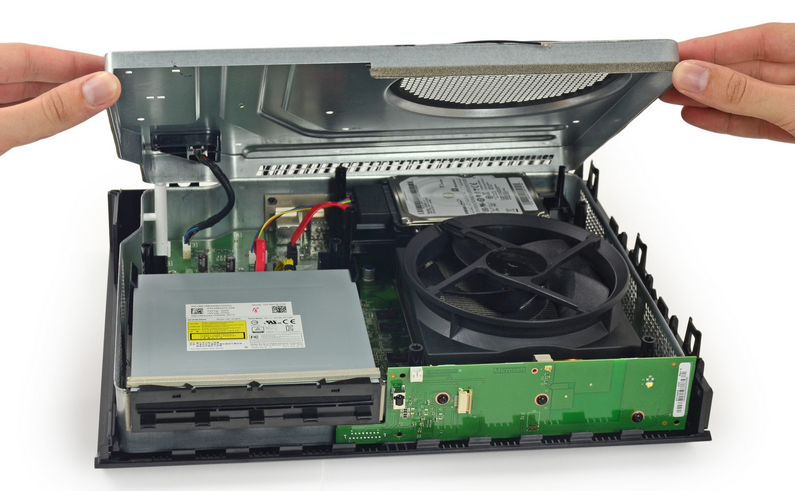Xbox One's internal design may prove for more stability and a longer lifespan compared to Sony’s PS4

Comparing the PlayStation 4 and Xbox One side by side makes Microsoft’s unit look a bit… chunky. But Microsoft has its reasoning for making its next generation system the size of a large concrete brick – ventilation. While Sony has decided to go for the sleek racing car style approach, Microsoft has longevity and stability on their list.
Popular website, iFixIt, has performed a tear down of the new console and unlike Sony’s PlayStation 4, the unit features a large amount of open space. Also, how can your rip open the unit without noticing the super large 112mm fan and giant heat sink?
When Microsoft originally launched their first generation Xbox 360, the unit was plagued with issues of overheating and ultimately resulting in the undesirable red ring of death. Microsoft’s next generation of the Xbox 360, the Slim, featured added fans and ventilation to try and avoid and undesirable meltdown.
Sony has ultimately placed their focus on designing a unit with a small footprint and might not be thinking of the longevity of the unit for its consumers. The next generation consoles are meant to last a probable five to ten years and keeping all the internal components at safe heat levels are vital. Internals that are subject to high heat are less likely to survive next to a unit that remains fairly cooled.

In fact, some of Sony’s PlayStation 4 consoles has already begun to show the “red line of death”, which are the system’s way of notifying users that it is overheating. The blinking red light is usually followed by a system shutdown to prevent further damage.
In the end, the iFixIt teardown truly shows us a war between two consoles and their focuses when designing the units. Microsoft has allowed for a large amount of ventilation and has no intention of having your unit burn out like first generation Xbox 360 units.
Do you think the larger size of the Xbox One compared to the PlayStation 4 is worth the improved stability and (most likely) a longer lifespan for the system?
All the latest news, reviews, and guides for Windows and Xbox diehards.
Source: iFixIt

Michael is a Former Contributor for Windows Central, covering Microsoft hardware and software, including Xbox.
